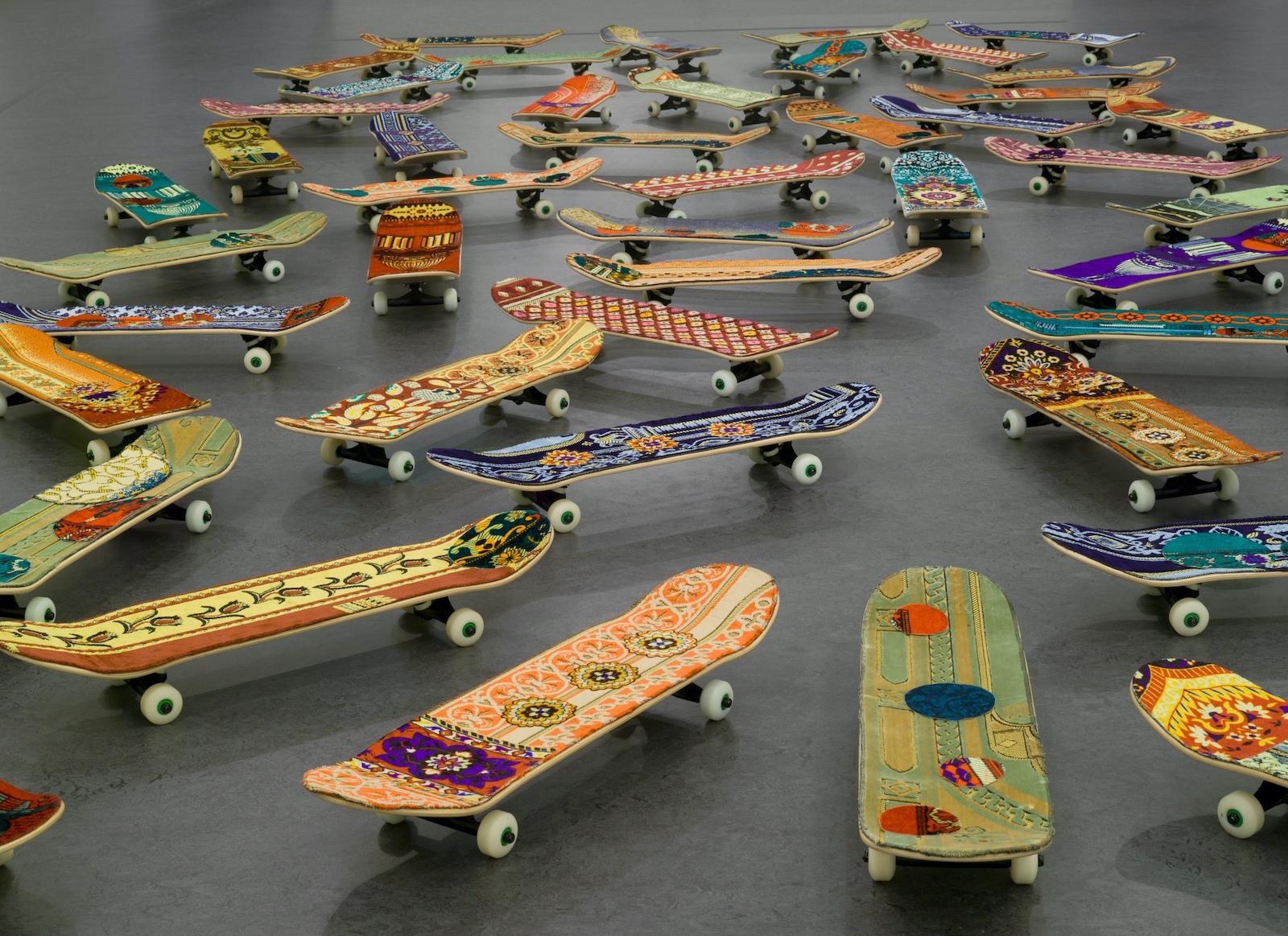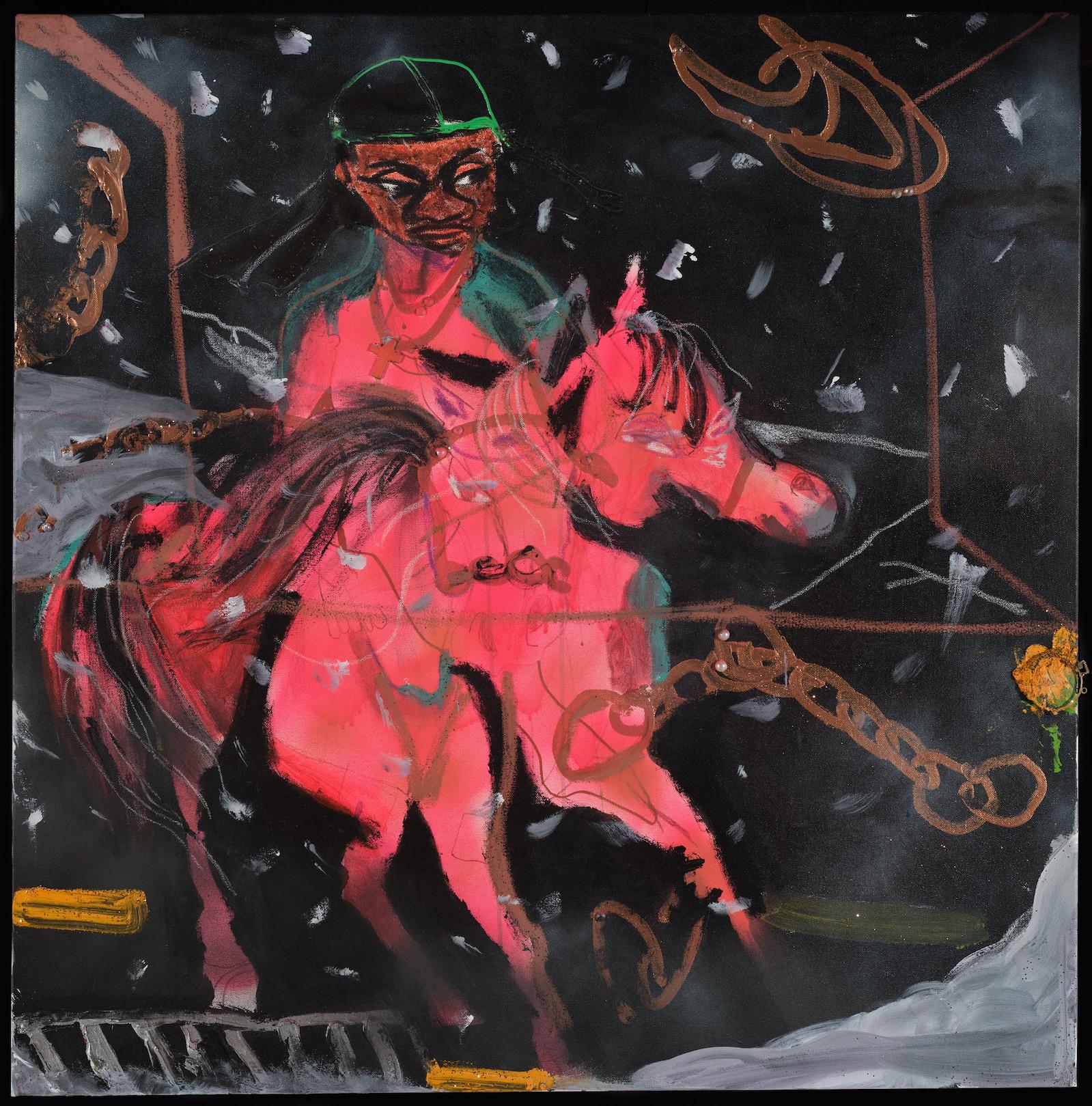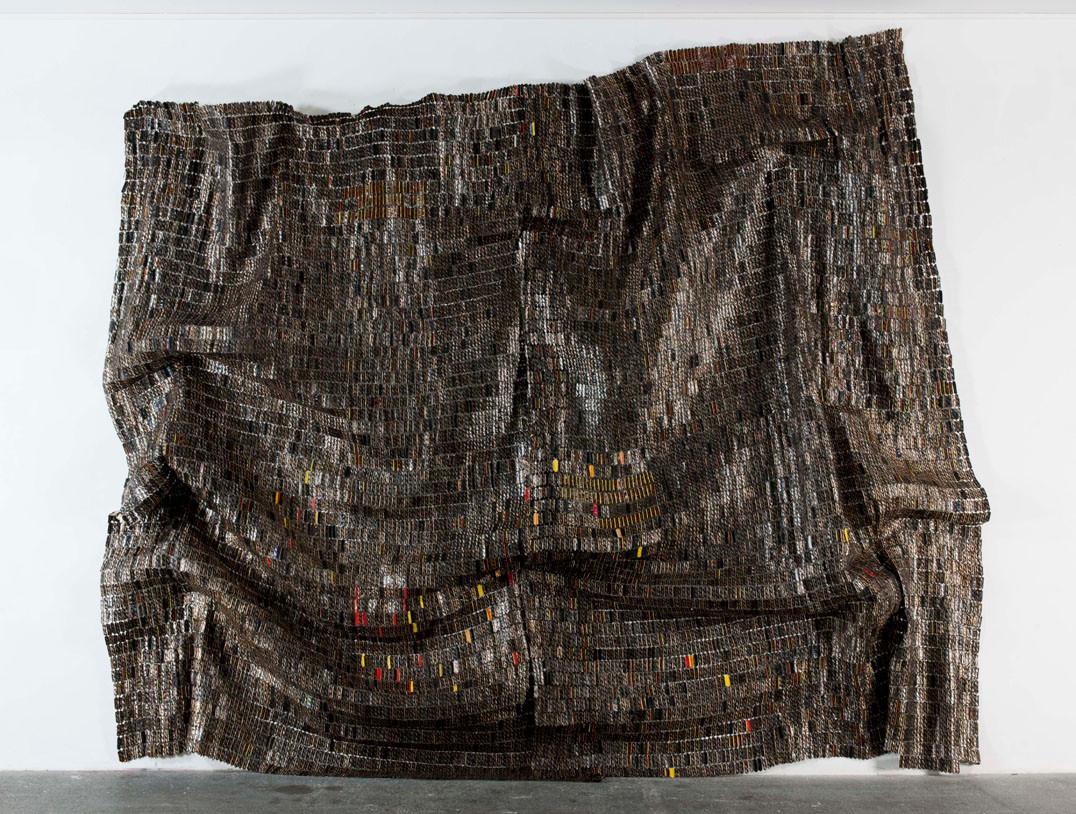Group exhibitions like The Slipstream share an inherent vice: They are immersive essays using visual objects to illustrate a thesis. Too often, this means shoehorning artworks into a predetermined narrative—a propensity that’s especially noticeable in exhibits limited to a museum’s holdings as The Slipstream is here. Absent the wider range of choices that works borrowed from outside sources would provide, curators of collection shows are frequently compelled to conjure organizational premises that risk becoming as meaningless as a prom night theme like “Enchantment Under the Sea.”

Mounir Fatmi, Maximum Sensation, 2010. Fifty skateboards, plastic, metal, textile, 5 × 8 × 31 11/16 in. (12.7 × 20.3 ×80.5 cm). Brooklyn Museum.
As years go, 2020 was indubitably a very bad one. Though you might reasonably ask, compared to what? 1861? 1933? 1968? Still, it is true that those twelve months saw a convergence of crises that would each pose a threat on its own: Pandemic, racial divisions, police brutality, climate change, and the very survival of the Republic itself—which, to be fair, isn’t unprecedented in U.S. history (see 1861 above).
Naturally, this raises the question of whether these events will impact art. The Brooklyn Museum attempts an answer with The Slipstream: Reflection, Resilience, and Resistance in the Art of Our Time, which brings out sixty recent acquisitions in multiple mediums to that end. From the standpoint of coherence, anyway, it isn’t always satisfactory.

Derek Fordjour, Blue Horn, 2017. Oil pastel, charcoal, acrylic, cardboard, and carved newspaper mounted on canvas, 60 × 40 in. (152.4 × 101.6 cm).

Jonathan Lyndon Chase, Loose Chain, 2020. Spray paint, glitter, plastic diamond, and acrylic on canvas, 36 × 36 in. (91.4 × 91.4 cm).
As organized by Eugenie Tsai and Joseph Shaikewitz, The Slipstream—named for the phenomenon of a moving plane producing enough of an atmospheric wake to pull along a trailing aircraft—doesn’t go quite that far, though it casts a wide net with some pretty big holes in it. First off, it supposes that the year we’ve all just experienced is some sort of apocalyptic watershed moment. In response, the show proposes “to hold space for individuals to find their feelings of fear, grief, vulnerability, anger, isolation, and despair—as well as those of joy, determination, and love—reflected in the art.” Besides the fact that all of those emotions could apply to any point in time, we don’t actually know how 2020 will fare in the annals of history; we only know that it was a hot mess that may or may not be forgotten by posterity.
Secondly, the roster of contributors in The Slipstream leans heavily in favor of artists of color, suggesting that the issues brought up by the exhibit are being viewed through the prism of race. That would make sense, as communities of color disproportionately suffer the deleterious effects of law enforcement, natural catastrophe, and infectious disease—and there are indeed works that, consciously or otherwise, address those points. But why then include white artists who seem to be off doing their own thing? It doesn’t add up, and for that reason, it’s probably best to approach the works individually without worrying too much about the show’s muddled message.

El Anatsui, Black Block, 2010. Aluminum and copper wire. 207 × 133 1/2 in., 67 lb. (525.8 × 339.1 cm, 30.39 kg).
Take, for example, two pieces that recycle abject materials into art. In a large room, the great Ghanaian bricoleur El Anatsui has installed one of his signature wall hangings made from bottle caps—or in this instance, from aluminum labels for a whiskey called Liquor Headmaster. Resembling a giant’s ceremonial robe or fabulous set of chainmail armor, the work cascades down the wall, shimmering in black and gold with intermittent glints of red and yellow. In another gallery, Yuji Agematsu populates a pair of shelves with tiny sculptures fashioned from cigarette packaging, chewed gum, dead flies, and other bits of everyday detritus transformed into bonsai-like compressions of modern life.
A standout in the show is Arthur Jaffa’s epic akingdoncomethas, a projected video montaged out of poor-quality VHS tapes found on YouTube. The work is a paean to the Black Church, depicting preachers preaching, choirs choiring, and one positively possessed performance by gospel star, Le’Andrea Johnson. Occasionally, this spiritual outpouring is interrupted by real-word scenes like those of a California wildfire at night, glowing with volcanic intensity. Beyond its catastrophic connotations, this image seems to allude to Moses’s burning bush, speaking the word of God.

Arthur Jafa, Still from akingdoncomethas, 2018. Single-channel video (color, sound): 1 hour, 41 min.
Other notable contributions include Titus Kaphar’s monumental portrait diptych of a prison inmate against a gilded background, from a series of paintings based on mugshots of incarcerated African American men who share the first name of the artist’s father—Jerome. On the right, the panel is covered in tar up to the subject’s nose; on the left, his face is completely obscured by the same gunk. Elsewhere, Karon Davis’s uncanny figurative tableau in plaster and cloth portrays a weary nurse or caregiver taking a cigarette break while seated on a bench.
But as strong as some specific works are, The Slipstream, to elaborate on its aeronautical metaphor, never really takes off as a whole, which is too bad. With some judicious editing and a narrower focus, it might have gotten into the air with plenty of tailwind behind it.






















![DEl Kathryn Barton [Australian b. 1972] the more than human love , 2025 Acrylic on French linen 78 3/4 x 137 3/4 inches 200 x 350 cm Framed dimensions: 79 7/8 x 139 inches 203 x 353 cm](/sites/default/files/styles/image_5_column/public/ab15211bartonthe-more-human-lovelg.jpg?itok=wW_Qrve3)



